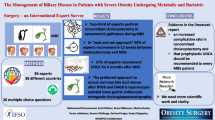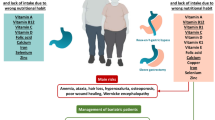Abstract
We determined the frequency of gallstones (GS) in iron deficiency anemia (IDA) patients and evaluated factors that could affect GS formation—like lipid levels and gallbladder (GB) motilities of the patients. One hundred and eleven IDA patients (88 females, 23 males; median age, 42) and 81 healthy controls (68 females, 13 males; median age, 42) were included into our study. The clinical findings of all IDA patients were recorded down; biochemical values and body mass index (BMI) were determined; and abdominal ultrasonography was performed. In addition, GB emptying was monitored by ultrasound at 30-min intervals for 2 h after a mixed meal in randomly chosen, age-matched 25 IDA patients and 26 controls. Fasting volume (FV), residual volume (RV), and ejection fraction (EF) for all GBs were determined. The frequency of GS plus cholecystectomy was significantly higher in IDA patients (15 cases, 13.5%) than in the control group (five cases, 6.2%, p = 0.048). IDA patients with GS plus cholecystectomy were older than those without GS plus cholecystectomy (p < 0.001). FV and EF did not differ between IDA and control groups (p > 0.05). On the other hand, RV was significantly higher in IDA group than in controls (p = 0.035). The frequency of GS in IDA patients was significantly higher than in controls. The increased prevalence of GS in IDA might be explained with impaired GB motility.
Similar content being viewed by others
References
Bates T, Harrison M, Lowe D, Lawson C, Padley N (1992) Longitudinal study of gallstone prevalence at necropsy. Gut 33:103–107 doi:10.1136/gut.33.1.103
Johnston DE, Kaplan MM (1993) Pathogenesis and treatment of gallstones. N Engl J Med 328:412–421 doi:10.1056/NEJM199302113280608
Sterling RK, Shiffman ML (1998) Nonsteroidal antiinflammatory drugs and gallstone disease: will an aspirin a day keep the gallstones away. Am J Gastroenterol 93:1405–1407 doi:10.1111/j.1572-0241.1998.01405.x
Johnston SM, Murray KP, Martin SA, Fox-Talbot K, Lipsett PA, Lillemoe KD et al (1997) Iron deficiency enhances cholesterol gallstones formation. Surgery 122:354–361 doi:10.1016/S0039-6060(97)90027-1
Swartz-Basile DA, Goldblatt MI, Blaser C, Decker PA, Ahrendt SA, Sarna SK et al (2000) Iron deficiency diminishes gallbladder neuronal nitric oxide synthase. J Surg Res 90:26–31 doi:10.1006/jsre.2000.5827
Goldblatt MI, Swartz-Basile DA, Choi SH, Rafiee P, Nakeeb A, Sarna SK et al (2001) Iron deficiency transiently suppresses biliary neuronal nitric oxide synthase. J Surg Res 98:123–128 doi:10.1006/jsre.2001.6196
Zeman RK, Garra BS (1991) Gallbladder imaging. The state of the art. Gastroenterol Clin North Am 20:127–156
Everson GT, Braverman DZ, Johnson ML, Kern F Jr (1980) A critical evaluation of real-time ultrasonography for the study of gallbladder volume and contraction. Gastroenterology 79:40–46
Altiparmak MR, Pamuk ON, Pamuk GE, Celik AF, Apaydin S, Cebi D et al (2003) The incidence of gallstones in chronic renal failure patients undergoing hemodialysis. Am J Gastroenterol 98:813–820 doi:10.1111/j.1572-0241.2003.07382.x
Volzke H, Baumeister SE, Alte D, Hoffmann W, Schwahn C, Simon P et al (2005) Independent risk factors for gallstones formation in a region with high cholelithiasis prevalence. Digestion 71:97–105 doi:10.1159/000084525
Bennion LJ, Grundy SM (1978) Risk factors for the development of cholelithiasis in man (second of two parts). N Engl J Med 299:1221–1227
Maringhini A, Ciambra M, Baccelliere P, Raimondo M, Orlando A, Tinè F et al (1993) Biliary sludge and gallstones in pregnancy: incidence, risk factors, and natural history. Ann Intern Med 119:116–120
Barbara L, Sama C, Morselli Labate AM, Taroni F, Rusticali AG, Festi D et al (1987) A population study on the prevalence of gallstone disease: the Sirmione study. Hepatology 7:913–917 doi:10.1002/hep.1840070520
Thornton J, Symes C, Heaton K (1983) Moderate alcohol intake reduces bile cholesterol saturation and raises HDL cholesterol. Lancet 2:819–822 doi:10.1016/S0140-6736(83)90738-9
Balemba OB, Salter MJ, Mawe GM (2004) Innervation of the extrahepatic biliary tract. Anat Rec A Discov Mol Cell Evol Biol 280:836–847 doi:10.1002/ar.a.20089
Pauletzki J, Althaus R, Holl J, Sackmann M, Paumgartner P (1996) Gallbladder emptying and gallstone formation: a prospective study on gallstone recurrence. Gastroenterology 111:765–771 doi:10.1053/gast.1996.v111.pm8780583
Portincasa P, Di Ciaula A, vanBerge-Henegouwen GP (2004) Smooth muscle function and dysfunction in gallbladder disease. Curr Gastroenterol Rep 6:151–162 doi:10.1007/s11894-004-0043-0
Guliter S, Yilmaz S, Karakan T (2003) Evaluation of gallbladder volume and motility in non-insulin-dependent diabetes mellitus patients using real-time ultrasonography. J Clin Gastroenterol 37:288–291 doi:10.1097/00004836-200310000-00005
Bailey-Wood R, Blayney LM, Muir JR, Jacobs A (1975) The effects of iron deficiency on rat liver enzymes. Br J Exp Pathol 56:193–198
Billiar TR (1995) Nitric oxide: novel biology with clinical relevance. Ann Surg 221:339–349 doi:10.1097/00000658-199504000-00003
Li CG, Rand MJ (1990) Nitric oxide and vasoactive intestinal polypeptide mediate non-adrenergic, non-cholinergic inhibitory transmission to smooth muscle of the rat gastric fundus. Eur J Pharmacol 191:303–309 doi:10.1016/0014-2999(90)94162-Q
Salomons H, Keaveny AP, Henihan R, Offner G, Sengupta A, Lamorte WW et al (1997) Nitric oxide and gallbladder motility in prairie dogs. Am J Physiol 272(4 Pt 1):G770–G778
Uemura S, Pompolo S, Furness JB, Hardy KJ (1997) Nitric oxide synthase in neurons of the human gallbladder and its colocalization with neuropeptides. J Gastroenterol Hepatol 12:257–265 doi:10.1111/j.1440-1746.1997.tb00418.x
Author information
Authors and Affiliations
Corresponding author
Rights and permissions
About this article
Cite this article
Pamuk, G.E., Ümit, H., Harmandar, F. et al. Patients with iron deficiency anemia have an increased prevalence of gallstones. Ann Hematol 88, 17–20 (2009). https://doi.org/10.1007/s00277-008-0557-x
Received:
Accepted:
Published:
Issue Date:
DOI: https://doi.org/10.1007/s00277-008-0557-x




